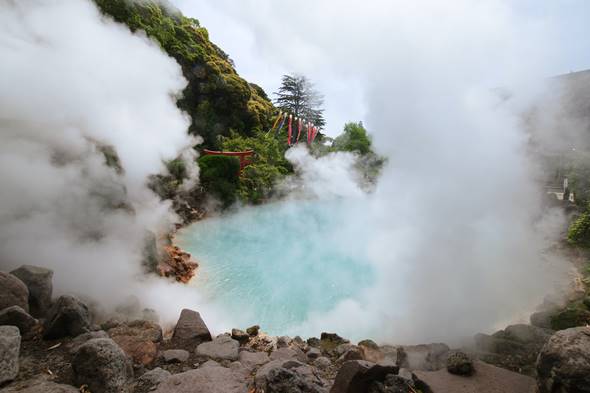
Japan is an Eastern Asian country with so many unique spots to visit. You have the hanami festivals in the spring, which is when locals and tourists gather together to view flowers throughout the country. And there’s also onsen spots where people go to relax and socialize with each other at hot springs.
Before you book your trip to Japan to enjoy as many onsen spots as you can, don’t forget to look into Japan regional train passes. As long as you are staying in one region, you can save more during your trip by booking a train pass for just one region.
What is Onsen?
Onsen is a long-standing tradition and practice in Japan where people gather together in hot springs or other corresponding facilities to clean themselves while socializing with comrades. Most individuals years ago regarded onsen as a place to revitalize their beauty and/or to cure themselves of a sickness.
The surrounding facilities of an onsen can also be bathhouses and local inns. Tourists and locals may book a stay at the nearby inn and come to the hot springs once or twice a day to relax and clean themselves at their leisure.
How Many Onsen Spots Are There In Japan?
There are as many as 25,000 onsen spots throughout Japan. About 3,000 of the 25,000 onsen locations have naturally warm hot springs thanks to the geothermal heat generated.
How To Get To Onsen Locations In Japan
Be prepared for long bus rides to some of these local onsen locations depending on the region of Japan you are visiting. Choose the nearest onsen spots to take full advantage of your Japanese regional train pass. Any onsen spots that do not have a direct train route may mean you have to take a part train part bus route or a full-on bus route.
Ginzan Onsen in Yamagata
Enjoy scenic views of the Ginzan River when you visit Ginzan Onsen. The soft light from gas-powered lamps hung at the wooden buildings of the hot springs and the natural sounds of the Ginzan River make it a serenely peaceful experience if you prefer to soak in the hot springs at night.
Believe it or not, Ginzan Onsen is a popular outdoor bathing venue in the winter because of its one-of-a-kind scenery. Plus, feeling the combination of the cold outside air balancing itself out on your body as you dip yourself into the hot spring is a great experience.
If you are at the Tokyo Station, it takes about three and a half hours to arrive at the Oishida Station via the Yamagata Shinkansen. From there, hail a bus to arrive at the Ginzan Onsen.
Kurokawa Onsen in Kumamoto, Kyushi
In the heart of Kyushi’s city of Kumamoto is the Kurokawa Onsen, home to 30 onsen bathing facilities for patrons to choose from. A wooden tegata pass, which costs 1,300 yen, can gain you access to 3 favorite onsen baths out of the 30 available. Over 300 years back, feudal lords have been known to lounge at Kurokawa Onsen during extended expeditions from city to city.
You can take a bus from Fukuoka Airport to arrive at Kurokawa Onsen in about two and a half hours. No trains lead to Kurokawa Onsen directly as one of its stops.
Nozawa Onsen in Nagano
Nozawa Onsen provides a budget-friendly onsen experience where you don’t need a paid pass to enjoy one of their 13 hot springs. Despite being smaller than usual onsen, you can still enjoy a relaxing experience for it being all free.
It’s another popular winter hot spring venue where you can ski or snowboard the local slopes by day and soak in one of the hotsprings by nightfall. You’ll also love the nod to the wooden lookalike architecture close to what was animated on Studio Ghibli’s “Spirited Away”.
Onsen Etiquette
Especially if you have never been to an onsen or Japan in general before, take heed to follow some onsen etiquette. You don’t want to visit there and possibly do something to offend another patron or hurt yourself.
Embrace your nudity as it is accepted and encouraged when visiting an onsen. Do not bring garments of any kind while you take a dip in the hot spring. Nope, bathing suits aren’t appropriate either!
If you are drunk, experiencing chronic bronchitis, or have a breathing condition, you should not visit an onsen location. Water temperatures can go up to 40 degrees Celsius which is too hot for anyone with these preexisting conditions to handle.
Conclusion
Onsen is a relaxing tradition amongst the Japanese that has made public bathing acceptable amongst the community. If you are a bit shy at first, you will get used to it! Embrace it as an all-natural experience as you clean yourself, meet new friends, and relax in the hotsprings you intend to visit during your trip to Japan!
Author Bio:
Daniel Moore is an experienced content writer. He is associated with many renowned travel blogs as a guest author where he shares his valuable travel tips with the audience.



I’ve read a few really good things here, and it’s definitely worth saving for future visits.